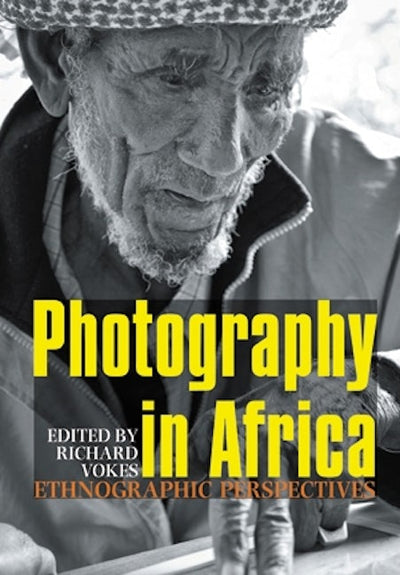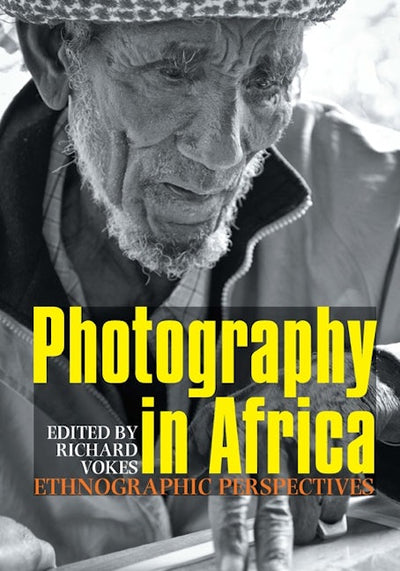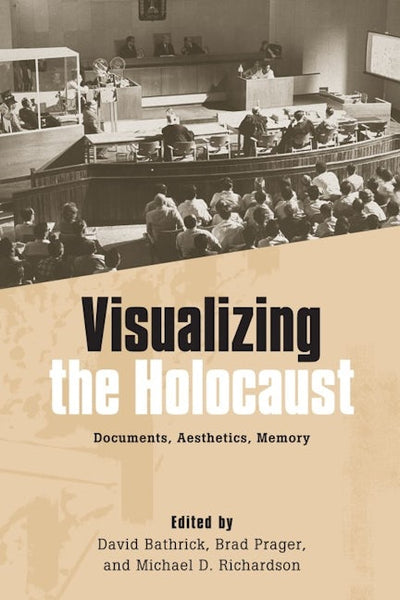Filter
-
Antiques & Collectibles
-
Architecture
-
Art
-
Bibles
-
Biography & Autobiography
-
Body, Mind & Spirit
-
Business & Economics
-
Comics & Graphic Novels
-
Computers
-
Cooking
-
Crafts & Hobbies
-
Design
-
Education
-
Family & Relationship
-
Fiction
-
Foreign Language Study
-
Games & Activities
-
Gardening
-
Health & Fitness
-
History
-
House & Home
-
Humor
-
Juvenile Fiction
-
Juvenile Nonfiction
-
Language Arts & Disciplines
-
Law
-
Literary Collections
-
Literary Criticism
-
Mathematics
-
Medical
-
Miscellaneous
-
Music
-
Nature
-
Performing Arts
-
Pets
-
Philosophy
-
Photography
-
Poetry
-
Political Science
-
Psychology
-
Reference
-
Religion
-
Self-Help
-
Science
-
Social Science
-
Sports & Recreation
-
Study Aids
-
Technology & Engineering
-
Transportation
-
Travel
-
True Crime
-
Young Adult Fiction
-
Young Adult Nonfiction
-
Antiques & Collectibles
-
Architecture
-
Art
-
Bibles
-
Biography & Autobiography
-
Body, Mind & Spirit
-
Business & Economics
-
Comics & Graphic Novels
-
Computers
-
Cooking
-
Crafts & Hobbies
-
Design
-
Education
-
Family & Relationship
-
Fiction
-
Foreign Language Study
-
Games & Activities
-
Gardening
-
Health & Fitness
-
History
-
House & Home
-
Humor
-
Juvenile Fiction
-
Juvenile Nonfiction
-
Language Arts & Disciplines
-
Law
-
Literary Collections
-
Literary Criticism
-
Mathematics
-
Medical
-
Miscellaneous
-
Music
-
Nature
-
Performing Arts
-
Pets
-
Philosophy
-
Photography
-
Poetry
-
Political Science
-
Psychology
-
Reference
-
Religion
-
Self-Help
-
Science
-
Social Science
-
Sports & Recreation
-
Study Aids
-
Technology & Engineering
-
Transportation
-
Travel
-
True Crime
-
Young Adult Fiction
-
Young Adult Nonfiction
5 products
Nathanial Eli Gardner
A Companion to Latin American Photography
Regular price $120.00 Save $-120.00
How can photography enrich our knowledge of Latin America?
Photography provides unique insights into Latin America. It acts as a witness, agent, and archive - containing a wealth of knowledge about the continent, its social classes, and its multiple ethnicities. This companion introduces the reader to the role that photography plays in Latin America, offers ways in which it can be studied, and reveals how this medium can promote a deeper awareness of the region.
It reviews the history of photography in Latin America; ways in which the technology transmits distinctive information; the influence of specific photographers and their relationships with patrons, mentors, and students; the role of institutions in promoting photography; and the developing Latin American canon. The Companion to Latin American Photography also explores how the medium can shape Latin American narratives and cultural identities; assert or question power; serve as testimony and memory; and represent and empower women, children and youth, as well as marginalized groups such as the disappeared.
The study is intended not only to provide an overview of Latin American photography (including dozens of images from a vast array of photographers over the past two centuries), it also discusses innovative work taking place there. Above all, this book can be viewed as a guide to the ways in which photography can enhance and expand a viewer's knowledge of Latin America.
Photography provides unique insights into Latin America. It acts as a witness, agent, and archive - containing a wealth of knowledge about the continent, its social classes, and its multiple ethnicities. This companion introduces the reader to the role that photography plays in Latin America, offers ways in which it can be studied, and reveals how this medium can promote a deeper awareness of the region.
It reviews the history of photography in Latin America; ways in which the technology transmits distinctive information; the influence of specific photographers and their relationships with patrons, mentors, and students; the role of institutions in promoting photography; and the developing Latin American canon. The Companion to Latin American Photography also explores how the medium can shape Latin American narratives and cultural identities; assert or question power; serve as testimony and memory; and represent and empower women, children and youth, as well as marginalized groups such as the disappeared.
The study is intended not only to provide an overview of Latin American photography (including dozens of images from a vast array of photographers over the past two centuries), it also discusses innovative work taking place there. Above all, this book can be viewed as a guide to the ways in which photography can enhance and expand a viewer's knowledge of Latin America.

Richard Vokes
Photography in Africa
Regular price $130.00 Save $-130.00
Gives an ethnographic account of the complexities of the use of photography in Africa, both historically and in contemporary practice.
This collection of studies in African photography examines, through a series of empirically rich historical and ethnographic cases, the variety of ways in which photographs are produced, circulated, and engaged across a range of social contexts. In so doing, it elucidates the distinctive characteristics of African photographic practices and cultures, vis-à-vis those of other forms of 'vernacular photography' worldwide. In addition, these studies develop areflexive turn, examining the history of academic engagement with these African photographic cultures, and reflecting on the distinctive qualities of the ethnographic method as a means for studying such phenomena.
The volumecritically engages current debates in African photography and visual anthropology. First, it extends our understanding of the variety of ways in which both colonial and post-colonial states in Africa have used photography as a means for establishing, and projecting, their authority. Second, it moves discussion of African photography away from an exclusive focus on the role of the 'the studio' and looks at the circulations through which the studios' products - the photographs themselves - later pass as artefacts of material culture. Last, it makes an important contribution to our understanding of the relationship between photography and ethnographic research methods, as these have been employed in Africa.
Richard Vokes is Senior Lecturer in Anthropology at the University of Canterbury, New Zealand, and author of Ghosts of Kanungu
This collection of studies in African photography examines, through a series of empirically rich historical and ethnographic cases, the variety of ways in which photographs are produced, circulated, and engaged across a range of social contexts. In so doing, it elucidates the distinctive characteristics of African photographic practices and cultures, vis-à-vis those of other forms of 'vernacular photography' worldwide. In addition, these studies develop areflexive turn, examining the history of academic engagement with these African photographic cultures, and reflecting on the distinctive qualities of the ethnographic method as a means for studying such phenomena.
The volumecritically engages current debates in African photography and visual anthropology. First, it extends our understanding of the variety of ways in which both colonial and post-colonial states in Africa have used photography as a means for establishing, and projecting, their authority. Second, it moves discussion of African photography away from an exclusive focus on the role of the 'the studio' and looks at the circulations through which the studios' products - the photographs themselves - later pass as artefacts of material culture. Last, it makes an important contribution to our understanding of the relationship between photography and ethnographic research methods, as these have been employed in Africa.
Richard Vokes is Senior Lecturer in Anthropology at the University of Canterbury, New Zealand, and author of Ghosts of Kanungu

Richard Vokes
Photography in Africa
Regular price $36.95 Save $-36.95
Gives an ethnographic account of the complexities of the use of photography in Africa, both historically and in contemporary practice.
This collection of studies in African photography examines, through a series of empirically rich historical and ethnographic cases, the variety of ways in which photographs are produced, circulated, and engaged across a range of social contexts. In so doing, it elucidates the distinctive characteristics of African photographic practices and cultures, vis-à-vis those of other forms of 'vernacular photography' worldwide. In addition, these studies develop areflexive turn, examining the history of academic engagement with these African photographic cultures, and reflecting on the distinctive qualities of the ethnographic method as a means for studying such phenomena.
The volumecritically engages current debates in African photography and visual anthropology. First, it extends our understanding of the variety of ways in which both colonial and post-colonial states in Africa have used photography as a means for establishing, and projecting, their authority. Second, it moves discussion of African photography away from an exclusive focus on the role of the 'the studio' and looks at the circulations through which the studios' products - the photographs themselves - later pass as artefacts of material culture. Last, it makes an important contribution to our understanding of the relationship between photography and ethnographic research methods, as these have been employed in Africa.
RICHARD VOKES is Senior Lecturer in Anthropology and Development Studies at the University of Adelaide, Australia, and author of Ghosts of Kanungu
This collection of studies in African photography examines, through a series of empirically rich historical and ethnographic cases, the variety of ways in which photographs are produced, circulated, and engaged across a range of social contexts. In so doing, it elucidates the distinctive characteristics of African photographic practices and cultures, vis-à-vis those of other forms of 'vernacular photography' worldwide. In addition, these studies develop areflexive turn, examining the history of academic engagement with these African photographic cultures, and reflecting on the distinctive qualities of the ethnographic method as a means for studying such phenomena.
The volumecritically engages current debates in African photography and visual anthropology. First, it extends our understanding of the variety of ways in which both colonial and post-colonial states in Africa have used photography as a means for establishing, and projecting, their authority. Second, it moves discussion of African photography away from an exclusive focus on the role of the 'the studio' and looks at the circulations through which the studios' products - the photographs themselves - later pass as artefacts of material culture. Last, it makes an important contribution to our understanding of the relationship between photography and ethnographic research methods, as these have been employed in Africa.
RICHARD VOKES is Senior Lecturer in Anthropology and Development Studies at the University of Adelaide, Australia, and author of Ghosts of Kanungu

Larry Merrill
Pedestrian Photographs
Regular price $29.95 Save $-29.95
A rich collection of photographs representing contemporary New Yorkers in their urban environment.
Pedestrian Photographs showcases the keen eye of photographer Larry Merrill, and includes forty-eight color plates -- mainly created between 2004 and 2007 -- depicting street life in Manhattan's east side and Central Park.Introductory essays by noted author Wendell Berry and by the University of Rochester Memorial Art Gallery's chief curator, Marjorie Searl, contextualize Merrill's work, which can also be found in the collections of the George Eastman House, Yale Art Gallery, Museum of Fine Arts Houston, Minneapolis Institute of Arts, the Museum of the City of New York, and the Israel Museum. Merrill has photographed for the World Bank in Bhutan, Haiti, Peru, and Senegal, and was guest curator of the Metropolitan Museum of Art's Uris Education Gallery exhibition, Photographs in Light. The work in this volume is on display at the Memorial Art Gallery, where Merrill has been longtime director of the Gallery's Creative Workshop.
Pedestrian Photographs showcases the keen eye of photographer Larry Merrill, and includes forty-eight color plates -- mainly created between 2004 and 2007 -- depicting street life in Manhattan's east side and Central Park.Introductory essays by noted author Wendell Berry and by the University of Rochester Memorial Art Gallery's chief curator, Marjorie Searl, contextualize Merrill's work, which can also be found in the collections of the George Eastman House, Yale Art Gallery, Museum of Fine Arts Houston, Minneapolis Institute of Arts, the Museum of the City of New York, and the Israel Museum. Merrill has photographed for the World Bank in Bhutan, Haiti, Peru, and Senegal, and was guest curator of the Metropolitan Museum of Art's Uris Education Gallery exhibition, Photographs in Light. The work in this volume is on display at the Memorial Art Gallery, where Merrill has been longtime director of the Gallery's Creative Workshop.

David Bathrick
Visualizing the Holocaust
Regular price $36.95 Save $-36.95
Collection of essays exploring the controversies surrounding images of the Holocaust.
Visual representations are an essential but highly contested means of understanding and remembering the Holocaust. Photographs taken in the camps in early 1945 provided proof of and visceral access to the atrocities. Later visualrepresentations such as films, paintings, and art installations attempted to represent this extreme trauma. While photographs from the camps and later aesthetic reconstructions differ in origin, they share goals and have raised similar concerns: the former are questioned not as to veracity but due to their potential inadequacy in portraying the magnitude of events; the latter are criticized on the grounds that the mediation they entail is unacceptable. Some have even questioned any attempt to represent the Holocaust as inappropriate and dangerous to historical understanding. This book explores the taboos that structure the production and reception of Holocaust images and the possibilities that result from the transgression of those taboos. Essays consider the uses of various visual media, aesthetic styles, and genres in representations of the Holocaust; the uses of perpetrator photography; the role of trauma in memory; aesthetic problems of mimesis and memory in the work of Lanzmann, Celan, and others; and questions about mass-cultural representations of the Holocaust.
David Bathrick is Emeritus Professor of German at Cornell University, Brad Prager is Associate Professor of German at the University of Missouri, and Michael D. Richardson is Associate Professor of German at Ithaca College.
Visual representations are an essential but highly contested means of understanding and remembering the Holocaust. Photographs taken in the camps in early 1945 provided proof of and visceral access to the atrocities. Later visualrepresentations such as films, paintings, and art installations attempted to represent this extreme trauma. While photographs from the camps and later aesthetic reconstructions differ in origin, they share goals and have raised similar concerns: the former are questioned not as to veracity but due to their potential inadequacy in portraying the magnitude of events; the latter are criticized on the grounds that the mediation they entail is unacceptable. Some have even questioned any attempt to represent the Holocaust as inappropriate and dangerous to historical understanding. This book explores the taboos that structure the production and reception of Holocaust images and the possibilities that result from the transgression of those taboos. Essays consider the uses of various visual media, aesthetic styles, and genres in representations of the Holocaust; the uses of perpetrator photography; the role of trauma in memory; aesthetic problems of mimesis and memory in the work of Lanzmann, Celan, and others; and questions about mass-cultural representations of the Holocaust.
David Bathrick is Emeritus Professor of German at Cornell University, Brad Prager is Associate Professor of German at the University of Missouri, and Michael D. Richardson is Associate Professor of German at Ithaca College.







